Whether you’re looking for a peaceful spot for contemplation or an action-packed adventure with incredible views, these five Greek volcanoes will not disappoint.
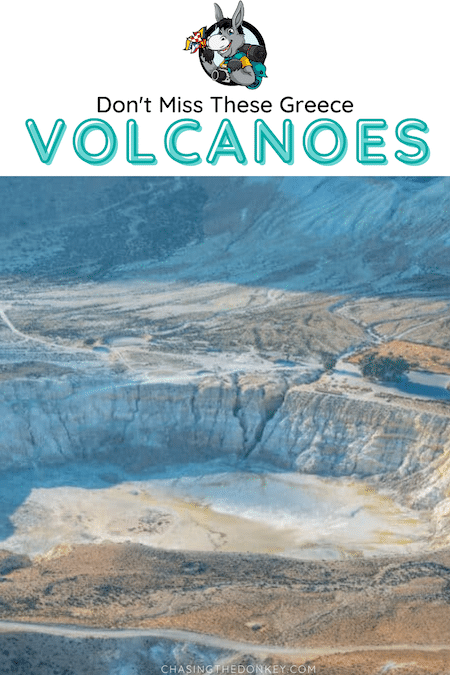 Looking for a thrilling and unforgettable adventure? Greece is home to some of the world’s most fascinating and awe-inspiring volcanoes.
Looking for a thrilling and unforgettable adventure? Greece is home to some of the world’s most fascinating and awe-inspiring volcanoes.
From breathtaking views to unique geological formations, these natural wonders are definitely worth adding to your travel bucket list. Ready to explore? Join us as we take you on a journey through the top 5 volcanoes in Greece that you absolutely must visit on your next trip!
Skip Ahead To My Advice Here!
Introduction To Greece’s Volcanoes

Greece is home to some of the most active volcanoes in Europe, with several still erupting today. The most famous and perhaps most dangerous of these is the Santorini Volcano, which last erupted in the 17th century and destroyed much of the island. Other volcanoes in Greece include Methana, Nisyros, Kos, Milos, and Palea Kameni.
The Santorini Volcano is by far the most popular tourist destination when it comes to Greek volcanoes. The volcano has been inactive for over 3,500 years but is still considered dangerous due to its proximity to heavily populated areas. A large eruption could quickly destroy nearby villages and towns.
The Methana Volcano is another popular tourist destination, as it offers spectacular views of the surrounding islands. The volcano is also home to several hot springs, which are said to have healing properties.
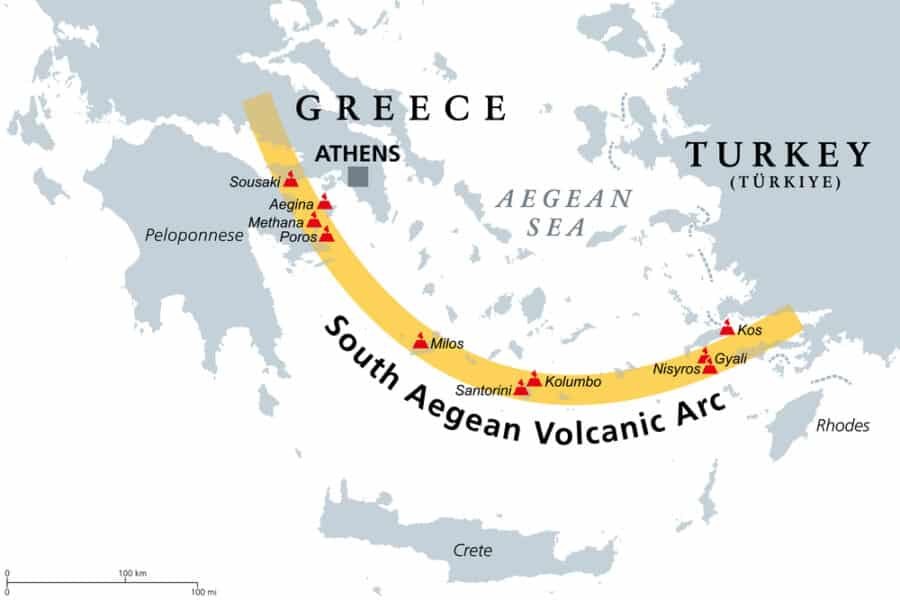
The Nisyros Volcano is one of the most active volcanoes in Greece and has erupted regularly for centuries. The last major eruption occurred in 1888, but there have been numerous smaller eruptions since then.
Kos is an island that was created by a volcanic eruption around 2,400 years ago. Today, the island is a popular tourist destination with its own airport and many hotels and resorts.
Milos is an island located west of Athens that is known for its dramatic coastline and beaches. The island also has its own active volcano, which last erupted.
Santorini Volcano: History and Highlights

Is there an active volcano in Santorini? Santorini is still an active volcano. The dark-colored lava shields of Nea and Palea Kameni have been formed by numerous minor and medium-sized eruptions, primarily effusive ones. They last erupted in 1950, and only fumarolic activity occurs inside the recently active craters now.
One of the most popular attractions on the island is the volcano itself. Although it hasn’t erupted in the last 70+ years, it is still an active volcano, and visitors can take boat tours around its crater. The views from the top are breathtaking.
Akrotiri

This archaeological site is located on the southern coast of Santorini and is believed to be one of the best-preserved ancient cities in the world. The city was destroyed by the volcanic eruption in Greece in the 1600s but has since been excavated, revealing houses, temples, and other structures that offer a glimpse into life on Santorini centuries ago.
Oia
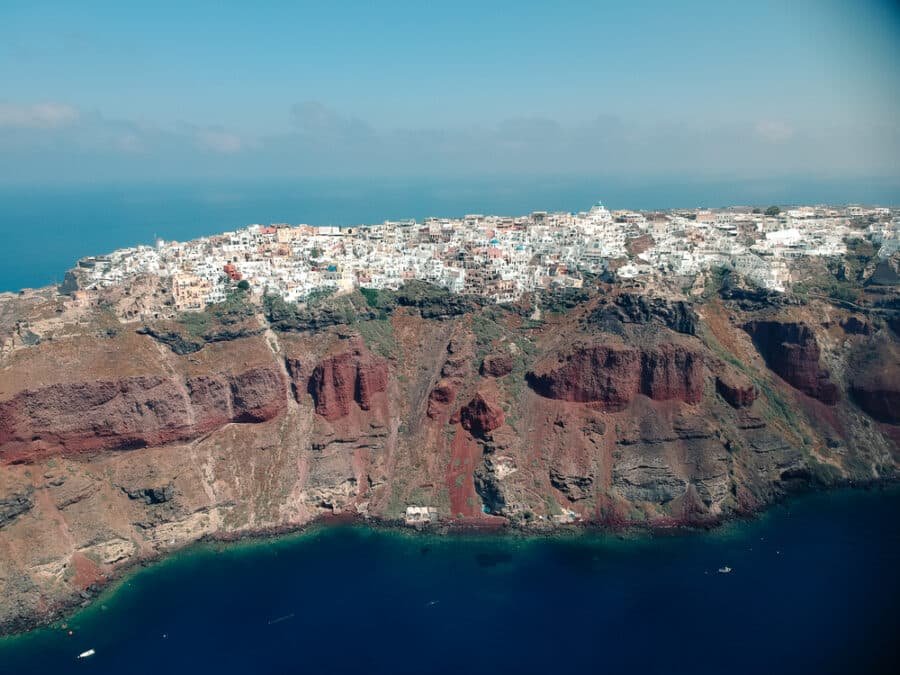
This picturesque village is located on the northern tip of Santorini and is known for its stunning sunsets. Visitors can enjoy panoramic views of the caldera (the crater formed by the volcanic eruption) and nearby islands from here. Oia is also home to many art galleries and boutiques, making it a great place to do some shopping.
Brands We Use And Trust
Methana Volcano: History and Highlights
Methana is a small volcanic island located in the Saronic Gulf, about 60 km southeast of Athens. The island has a long history of volcanic activity, with the last eruption occurring in the late 18th century.
Methana is home to several volcanoes, including the Methana Volcano, which is the largest and most active volcano on the island. The Methana Volcano has been active for over 3,000 years and has erupted numerous times.
The most recent eruption occurred in 1707 when lava flows destroyed several villages on the island. Despite its volatile history, the Methana Volcano is a popular tourist destination due to its unique geology and stunning views of the surrounding area.
Nisyros Volcano: History and Highlights
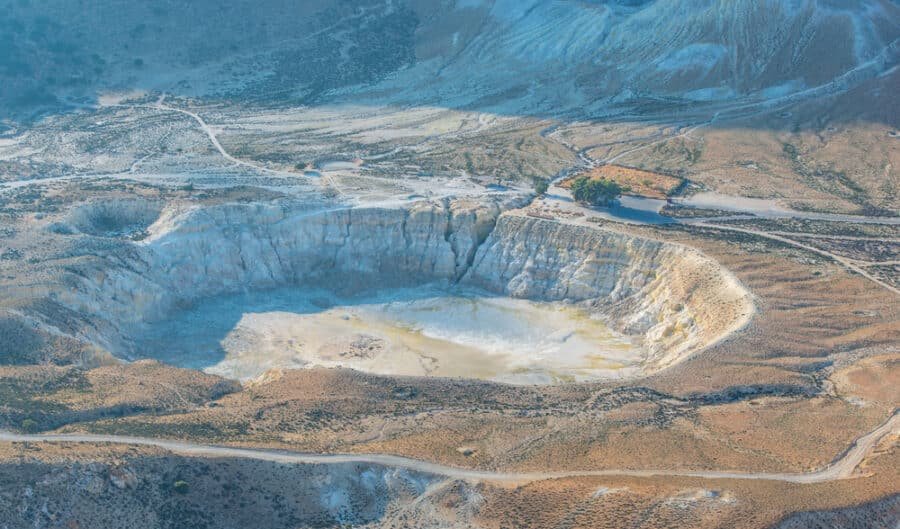
The volcanic island of Nisyros is located in the southeastern Aegean Sea, about 35 km from the island of Kos. It is the southernmost active volcano in Greece and has been in a nearly continuous state of eruption since the early 19th century. The most recent eruption occurred in 1988, and several smaller eruptions have occurred since then.
The island is home to two volcanoes, the older steaming crater of Stefanos and the younger, more active Nisyros Volcano. The Nisyros Volcano is a complex stratovolcano with multiple vents and a large caldera. It began erupting around 16,000 years ago and has had at least four major eruptions in the past 2,000 years. The last major eruption occurred in 1888, when a large portion of the volcano’s south side collapsed into the sea, creating a tsunami that caused damage to nearby islands.

Nisyros is a popular tourist destination today due to its unique landscape and volcano-related attractions. Visitors can hike to the top of the Nisyros Volcano for views of the surrounding islands or go on boat tours to see the steaming crater up close. There are also several hot springs on the island that are popular for their therapeutic properties.
Milos Volcano: History and Highlights

Milos Volcano is one of the most popular tourist destinations in Greece. The volcano is located on the island of Milos in the Aegean Sea. The volcano last erupted in the year 1950 and is currently inactive.
The history of Milos Volcano goes back to the Bronze Age when the first settlements were founded on the island. The name “Milos” comes from the Greek word for “an apple,” which is thought to be a reference to the abundance of apples on the island. The volcano has been a popular tourist destination since ancient times when people would come to admire its beauty and listen to its rumble.
The highlights of Milos Volcano include its stunning views, rich history, and unique geology. The volcano offers visitors a chance to see some of the most beautiful scenery in Greece and learn about its fascinating history.
Kos Volcano: History and Highlights
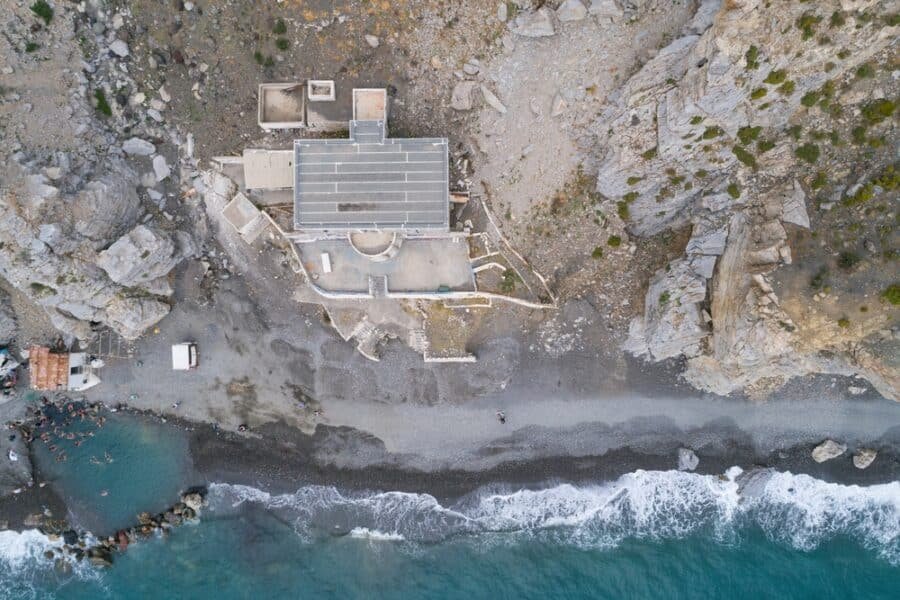
The Island of Kos is part of one of the largest volcano calderas in Europe that was formed after a massive explosion, much greater than the one at Santorini during Minoan times. Layers of pumice and pyroclastic rocks can still be seen across the island today, primarily on the western end, the Kefalos peninsula, where huge volcano domes continue to dominate.
It is one of Greece’s most fascinating active volcanoes. The other active centers comprising this caldera are Strongyle, Yali, and Nisyros islands; the latter is a small circular volcanic island about 30 km south of Kos. The last eruption took place in 1886, and it is likely to erupt again in the future.
Move This Adventure To Your Inbox & Get An Instant Freebie

No spam. Unsubscribe at any time.
Wrap Up On Volcanoes In Greece
Fun fact: did you know that the last volcano eruption in Greece was in 1950?
Greece is home to some of the world’s most beautiful and awe-inspiring volcanoes. From Santorini’s caldera to Nisyros’ crater lake, there are countless reasons why visiting these volcanoes should be on your bucket list.
Whether you’re looking for a peaceful spot for contemplation or an action-packed adventure with incredible views, these five Greek volcanoes will not disappoint.
- How To Tip In Greece
- Car Rental And Driving Tips In Greece
- Where To Stay In Greece To Avoid the Crowds
- What To Expect & Do In September In Greece
- Things To Do In Greece During The Winter
- Packing Tips For Greece
- How To Order Coffee In Greece
- How To Get From Santorini To Crete
- Best Beach Resorts In Greece
- Best Time To Visit Greece – A Seasonal Guide
- Airports On the Greek Islands

